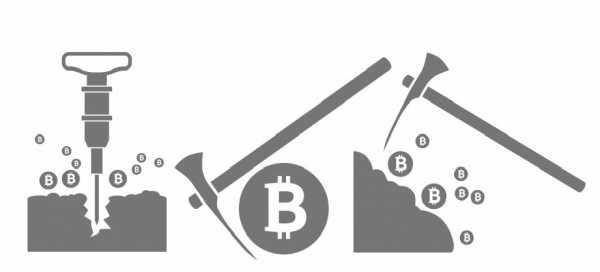Моноэтиловый эфир диэтиленгликоля. Эфир моноэтиловый диэтиленгликоля
Диэтиленгликоля моноэтиловый эфир Википедия
| Моноэтиловый эфир диэтиленгликоля | |
| 2-(2-этокси)этанол | |
| этилкарбитол, карбитол | |
| C₆H₁₄O₃ | |
| C2H5OCh3Ch3OCh3Ch3OH | |
| жидкость | |
| 134,17 г/моль | |
| 0,9902 г/см³ | |
| 201,9 °C | |
| 94,4 °C | |
| 1,4273 | |
| 111-90-0 | |
| 8146 | |
| 203-919-7 | |
| CCOCCOCCO | |
|
| |
| 40572 | |
| 13839107 | |
| Приводятся данные для стандартных условий (25 °C, 100 кПа), если не указано иного. | |
Диэтиленгликоля моноэтиловый эфир (этилкарбитол, карбитол).
Описание
Получается взаимодействием окиси этилена с этанолом.
Применение
- Растворитель нитратов целлюлозы, природных и синтетических смол, растительных масел
- Протрава для дерева
- Текстильно-вспомогательное вещество
- Компонент тормозных жидкостей, антифризов, абсорбентов для осушки газов
- Бактерицидное вещество
- Растворитель в парфюмерии
Литература и полезные ссылки
- Этилкарбитол технический
| Это заготовка статьи по химии. Вы можете помочь проекту, дополнив её. |
| этилкарбитол, карбитол | |
| C₆H₁₄O₃ | |
| C2H5OCh3Ch3OCh3Ch3OH | |
| жидкость | |
| 134,17 г/моль | |
| 0,9902 г/см³ | |
| 201,9 °C | |
| 94,4 °C | |
| 1,4273 | |
| 111-90-0 | |
| 8146 | |
| 203-919-7 | |
| CCOCCOCCO | |
| 1S/C6h24O3/c1-2-8-5-6-9-4-3-7/h7H,2-6h3,1h4XXJWXESWEXIICW-UHFFFAOYSA-N | |
| 40572 | |
| 13839107 | |
| Приводятся данные для стандартных условий 25 °C, 100 кПа, если не указано иного | |
Диэтиленгликоля моноэтиловый эфир Википедия
| Моноэтиловый эфир диэтиленгликоля | |
| 2-(2-этокси)этанол | |
| этилкарбитол, карбитол | |
| C₆H₁₄O₃ | |
| C2H5OCh3Ch3OCh3Ch3OH | |
| жидкость | |
| 134,17 г/моль | |
| 0,9902 г/см³ | |
| 201,9 °C | |
| 94,4 °C | |
| 1,4273 | |
| 111-90-0 | |
| 8146 | |
| 203-919-7 | |
| CCOCCOCCO | |
| 1S/C6h24O3/c1-2-8-5-6-9-4-3-7/h7H,2-6h3,1h4XXJWXESWEXIICW-UHFFFAOYSA-N | |
| 40572 | |
| 13839107 | |
| Приводятся данные для стандартных условий (25 °C, 100 кПа), если не указано иного. | |
Диэтиленгликоля моноэтиловый эфир (этилкарбитол, карбитол).
Описание[ | код]
Получается взаимодействием окиси этилена с этанолом.
Применение[ | код]
- Растворитель нитратов целлюлозы, природных и синтетических смол, растительных масел
- Протрава для дерева
- Текстильно-вспомогательное вещество
- Компонент тормозных жидкостей, антифризов, абсорбентов для осушки газов
- Бактерицидное вещество
- Растворитель в парфюмерии
Литература и полезные ссылки[ | код]
- Этилкарбитол технический
| Это заготовка статьи по химии. Вы можете помочь проекту, дополнив её. |
ru-wiki.ru
Моноэтиловый эфир диэтиленгликоля Википедия
| Моноэтиловый эфир диэтиленгликоля | |
| 2-(2-этокси)этанол | |
| этилкарбитол, карбитол | |
| C₆H₁₄O₃ | |
| C2H5OCh3Ch3OCh3Ch3OH | |
| жидкость | |
| 134,17 г/моль | |
| 0,9902 г/см³ | |
| 201,9 °C | |
| 94,4 °C | |
| 1,4273 | |
| 111-90-0 | |
| 8146 | |
| 203-919-7 | |
| CCOCCOCCO | |
| 1S/C6h24O3/c1-2-8-5-6-9-4-3-7/h7H,2-6h3,1h4XXJWXESWEXIICW-UHFFFAOYSA-N | |
| 40572 | |
| 13839107 | |
| Приводятся данные для стандартных условий (25 °C, 100 кПа), если не указано иного. | |
Диэтиленгликоля моноэтиловый эфир (этилкарбитол, карбитол).
Описание[ | код]
Получается взаимодействием окиси этилена с этанолом.
Применение[ | код]
- Растворитель нитратов целлюлозы, природных и синтетических смол, растительных масел
- Протрава для дерева
- Текстильно-вспомогательное вещество
- Компонент тормозных жидкостей, антифризов, абсорбентов для осушки газов
- Бактерицидное вещество
- Растворитель в парфюмерии
Литература и полезные ссылки[ | код]
- Этилкарбитол технический
| Это заготовка статьи по химии. Вы можете помочь проекту, дополнив её. |
ru-wiki.ru
Метиловый эфир диэтиленгликоля - Справочник химика 21
Бис-(метиловый эфир диэтиленгликоля)-себацинат [c.80]
Бис-(метиловый эфир диэтиленгликоля)-фталат см. [c.80]
Бис-(метиловый эфир диэтиленгликоля)-фталат Бис- [c.81]
Метил-2-этилбензол Метиловый эфир диэтиленгликоля. ... 760 165,15 164,3 194,2 84 [c.84]
Метиловый эфир диэтиленгликоля Фурфуриловый спирт Фурфурол Р-хлорэтанол Альдоль Этиловый эфир диэтиленгликоля Р-метоксиэтанол Уксусный ангидрид Анилин [c.1657]
Детергентными свойствами обладают основные серусодержащие алкилсалицилаты щелочноземельных металлов, получаемые реакцией алкил- или алкенилзамещенной салициловой кислоты или ее соли с серой в присутствии метилового эфира диэтиленгликоля в качестве растворителя [пат. США 3595791]. [c.86]Бис-(метиловый эфир диэтиленгликоля)-адипинат Бис- [2-(2-метоксиэтокси)-этил ]-адипи нат (—СН зСН гСООСН зСН ОСН гСН зОСНз) [c.81]
Реакцию проводят в простом эфире, обычно в тетрагидрофуране или ди-глиме (метиловый эфир диэтиленгликоля h4O h3 HJO h3 h3O h4). Диборан получают реакцией между двумя промышленно доступными реагентами — боргидридом натрия (NaBHi) и трехфтористым бором (BF3), часто in situ (в присутствии алкена). Алкилбораны не выделяют, а обрабатывают в том же реакционном сосуде щелочным раствором перекиси водорода. [c.489]
Отметим, что особенно химически стойки фтор- н хлорпроизводные углеводородов, а также полностью фторированные амины и эфиры, иногда используемые в качестве растворителей. В отдельных случаях применяют несколько менее распространенные, но хорошо себя зарекомендовавшие растворители, такие, как диметилсульфоксид (ДМСО), тетраметиленсульфон (сульфолан, ТМС), трис (диметиламино) фосфиноксид, нитрометан, нитробензол, ацетонитрил, бензонитрил, тетраметилмочевина (ТММ), диметилформ-амид (ДМФА), тетрагидрофуран (ТГФ), диоксан, а также различные эфиры этиленгликоля и диэтиленгликоля (в продажу поступают под названием карбитол или дованол метиловый эфир этиленгликоля — моноглим метиловый эфир диэтиленгликоля — диглим). [c.45]
Метиловый эфир диэтиленгликоля Метиловый эфир трипропиленглпколя [c.355]
С отгоняют сначала азеотропы метилового эфира диэтиленгликоля с moho-, ди- и триалкилбензолами, затем -- с [c.29]
Монометиловый эфир диэтиленгликоля, эпихлоргидрин а-Г лицерилхлорги-дриновый эфир моно-метилового эфира диэтиленгликоля ВРз- 0(СаНб)2 75-100° С [245] [c.143]
Разработан метод определения следов воды в жидких углеводородах и некоторых кислородсодержащих соединениях [11]. Сущность метода состоит в хроматографическом определении водорода, выделяющегося в результате реакции воды, растворенной в исследуемом жидком образце, с раствором натрийалюминийгидрида в ди-метиловом эфире диэтиленгликоля. Определение воды в органических соединениях является важной аналитической задачей. Предложенный метод анализа по сравнению с описанным в литературе характеризуется боль- [c.228]
По данным Гизена , смешанные эфиры малеиновой кислоты с этилен-гликолем и простым метиловым эфиром диэтиленгликоля являются поверх-ностно-активными и пластифицируюш,ими веш,ествами для дисперсий полимеров. Они способствуют структурированию во время пленкообразования, [c.721]
Гизен рекомендовал применять при суспензионной полимеризации смешанные диэфиры дигликолевой кислоты с этиленгликолем и с простым метиловым эфиром диэтиленгликоля. Такие смешанные эфиры можно использовать и как поверхностно-активные вещества, и как пластификаторы. [c.729]
Фирма Д-р Бек разработала высококонцентрированный эмальлак марки Теребек 536 НЗ на основе полиэфироимида, в котором в качестве основного растворителя использован диметилформамид. Содержание нелетучих веществ у этого лака 50—52%. Он пригоден для нанесения только на эмальагрегатах горизонтального типа и изготовления проводов небольших диаметров. Для изготовления проводов большого диаметра фирма Д-р Бек разработала лак марки Теребек 533-48М2 на основе того же полиэфироимида, но в котором в качестве растворителя служит смесь метилового эфира диэтиленгликоля и сольвента. Эта система растворителей менее токсична, чем смесь крезола с ксилолом, и обладает более высокими технологическими свойствами при эмали ровании. [c.113]
chem21.info
Моноэтиловый эфир диэтиленгликоля - WikiVisually
1. Химическая формула – These are limited to a single typographic line of symbols, which may include subscripts and superscripts. A chemical formula is not a name, and it contains no words. Although a chemical formula may imply certain simple chemical structures, it is not the same as a full chemical structural formula. Chemical formulas can fully specify the structure of only the simplest of molecules and chemical substances, the simplest types of chemical formulas are called empirical formulas, which use letters and numbers indicating the numerical proportions of atoms of each type. Molecular formulas indicate the numbers of each type of atom in a molecule. For example, the formula for glucose is Ch3O, while its molecular formula is C6h22O6. This is possible if the relevant bonding is easy to show in one dimension, an example is the condensed molecular/chemical formula for ethanol, which is Ch4-Ch3-OH or Ch4Ch3OH. For reasons of structural complexity, there is no condensed chemical formula that specifies glucose, chemical formulas may be used in chemical equations to describe chemical reactions and other chemical transformations, such as the dissolving of ionic compounds into solution. A chemical formula identifies each constituent element by its chemical symbol, in empirical formulas, these proportions begin with a key element and then assign numbers of atoms of the other elements in the compound, as ratios to the key element. For molecular compounds, these numbers can all be expressed as whole numbers. For example, the formula of ethanol may be written C2H6O because the molecules of ethanol all contain two carbon atoms, six hydrogen atoms, and one oxygen atom. Some types of compounds, however, cannot be written with entirely whole-number empirical formulas. An example is boron carbide, whose formula of CBn is a variable non-whole number ratio with n ranging from over 4 to more than 6.5. When the chemical compound of the consists of simple molecules. These types of formulas are known as molecular formulas and condensed formulas. A molecular formula enumerates the number of atoms to reflect those in the molecule, so that the formula for glucose is C6h22O6 rather than the glucose empirical formula. However, except for very simple substances, molecular chemical formulas lack needed structural information, for simple molecules, a condensed formula is a type of chemical formula that may fully imply a correct structural formula. For example, ethanol may be represented by the chemical formula Ch4Ch3OH
2. Агрегатное состояние – In physics, a state of matter is one of the distinct forms that matter takes on. Four states of matter are observable in everyday life, solid, liquid, gas, some other states are believed to be possible but remain theoretical for now. For a complete list of all states of matter, see the list of states of matter. Historically, the distinction is based on qualitative differences in properties. Matter in the state maintains a fixed volume and shape, with component particles close together. Matter in the state maintains a fixed volume, but has a variable shape that adapts to fit its container. Its particles are close together but move freely. Matter in the state has both variable volume and shape, adapting both to fit its container. Its particles are close together nor fixed in place. Matter in the state has variable volume and shape, but as well as neutral atoms, it contains a significant number of ions and electrons. Plasma is the most common form of matter in the universe. The term phase is used as a synonym for state of matter. In a solid the particles are packed together. The forces between particles are strong so that the particles move freely but can only vibrate. As a result, a solid has a stable, definite shape, solids can only change their shape by force, as when broken or cut. In crystalline solids, the particles are packed in a regularly ordered, there are various different crystal structures, and the same substance can have more than one structure. For example, iron has a cubic structure at temperatures below 912 °C. Ice has fifteen known crystal structures, or fifteen solid phases, glasses and other non-crystalline, amorphous solids without long-range order are not thermal equilibrium ground states, therefore they are described below as nonclassical states of matter
3. Плотность – The density, or more precisely, the volumetric mass density, of a substance is its mass per unit volume. The symbol most often used for density is ρ, although the Latin letter D can also be used. Mathematically, density is defined as mass divided by volume, ρ = m V, where ρ is the density, m is the mass, and V is the volume. In some cases, density is defined as its weight per unit volume. For a pure substance the density has the numerical value as its mass concentration. Different materials usually have different densities, and density may be relevant to buoyancy, purity, osmium and iridium are the densest known elements at standard conditions for temperature and pressure but certain chemical compounds may be denser. Thus a relative density less than one means that the floats in water. The density of a material varies with temperature and pressure and this variation is typically small for solids and liquids but much greater for gases. Increasing the pressure on an object decreases the volume of the object, increasing the temperature of a substance decreases its density by increasing its volume. In most materials, heating the bottom of a results in convection of the heat from the bottom to the top. This causes it to rise relative to more dense unheated material, the reciprocal of the density of a substance is occasionally called its specific volume, a term sometimes used in thermodynamics. Density is a property in that increasing the amount of a substance does not increase its density. Archimedes knew that the irregularly shaped wreath could be crushed into a cube whose volume could be calculated easily and compared with the mass, upon this discovery, he leapt from his bath and ran naked through the streets shouting, Eureka. As a result, the term eureka entered common parlance and is used today to indicate a moment of enlightenment, the story first appeared in written form in Vitruvius books of architecture, two centuries after it supposedly took place. Some scholars have doubted the accuracy of this tale, saying among other things that the method would have required precise measurements that would have been difficult to make at the time, from the equation for density, mass density has units of mass divided by volume. As there are units of mass and volume covering many different magnitudes there are a large number of units for mass density in use. The SI unit of kilogram per metre and the cgs unit of gram per cubic centimetre are probably the most commonly used units for density.1,000 kg/m3 equals 1 g/cm3. In industry, other larger or smaller units of mass and or volume are often more practical, see below for a list of some of the most common units of density
4. Температура кипения – The boiling point of a substance is the temperature at which the vapor pressure of the liquid equals the pressure surrounding the liquid and the liquid changes into a vapor. The boiling point of a liquid varies depending upon the environmental pressure. A liquid in a vacuum has a lower boiling point than when that liquid is at atmospheric pressure. A liquid at high pressure has a boiling point than when that liquid is at atmospheric pressure. For a given pressure, different liquids boil at different temperatures, for example, water boils at 100 °C at sea level, but at 93.4 °C at 2,000 metres altitude. The normal boiling point of a liquid is the case in which the vapor pressure of the liquid equals the defined atmospheric pressure at sea level,1 atmosphere. At that temperature, the pressure of the liquid becomes sufficient to overcome atmospheric pressure. The standard boiling point has been defined by IUPAC since 1982 as the temperature at which boiling occurs under a pressure of 1 bar, the heat of vaporization is the energy required to transform a given quantity of a substance from a liquid into a gas at a given pressure. Liquids may change to a vapor at temperatures below their boiling points through the process of evaporation, evaporation is a surface phenomenon in which molecules located near the liquids edge, not contained by enough liquid pressure on that side, escape into the surroundings as vapor. On the other hand, boiling is a process in which molecules anywhere in the liquid escape, a saturated liquid contains as much thermal energy as it can without boiling. The saturation temperature is the temperature for a corresponding saturation pressure at which a liquid boils into its vapor phase, the liquid can be said to be saturated with thermal energy. Any addition of energy results in a phase transition. If the pressure in a system remains constant, a vapor at saturation temperature will begin to condense into its liquid phase as thermal energy is removed, similarly, a liquid at saturation temperature and pressure will boil into its vapor phase as additional thermal energy is applied. The boiling point corresponds to the temperature at which the pressure of the liquid equals the surrounding environmental pressure. Thus, the point is dependent on the pressure. Boiling points may be published with respect to the NIST, USA standard pressure of 101.325 kPa, at higher elevations, where the atmospheric pressure is much lower, the boiling point is also lower. The boiling point increases with increased pressure up to the critical point, the boiling point cannot be increased beyond the critical point. Likewise, the point decreases with decreasing pressure until the triple point is reached
5. Температура вспышки – The flash point is the lowest temperature at which vapours of a volatile material will ignite, when given an ignition source. The flash point may sometimes be confused with the autoignition temperature, the fire point is the lowest temperature at which the vapor will keep burning after being ignited and the ignition source removed. The fire point is higher than the point, because at the flash point the vapor may be reliably expected to cease burning when the ignition source is removed. The flash point is a characteristic that is used to distinguish between flammable liquids, such as petrol, and combustible liquids, such as diesel. It is also used to characterize the fire hazards of liquids, all liquids have a specific vapor pressure, which is a function of that liquids temperature and is subject to Boyles Law. As temperature increases, vapor pressure increases, as vapor pressure increases, the concentration of vapor of a flammable or combustible liquid in the air increases. Hence, temperature determines the concentration of vapor of the liquid in the air. The flash point is the lowest temperature at which there will be enough flammable vapor to induce ignition when a source is applied. There are two types of flash point measurement, open cup and closed cup. In open cup devices, the sample is contained in a cup which is heated and, at intervals. The measured flash point will vary with the height of the flame above the liquid surface and, at sufficient height. The best-known example is the Cleveland open cup, in both these types, the cups are sealed with a lid through which the ignition source can be introduced. Closed cup testers normally give lower values for the point than open cup and are a better approximation to the temperature at which the vapour pressure reaches the lower flammable limit. The flash point is an empirical measurement rather than a physical parameter. The measured value will vary with equipment and test protocol variations, including temperature ramp rate, time allowed for the sample to equilibrate, sample volume, methods for determining the flash point of a liquid are specified in many standards. For example, testing by the Pensky-Martens closed cup method is detailed in ASTM D93, IP34, ISO2719, DIN51758, JIS K2265 and AFNOR M07-019. Determination of flash point by the Small Scale closed cup method is detailed in ASTM D3828 and D3278, EN ISO3679 and 3680, cEN/TR15138 Guide to Flash Point Testing and ISO TR29662 Guidance for Flash Point Testing cover the key aspects of flash point testing. Gasoline is a used in a spark-ignition engine
6. SMILES – The simplified molecular-input line-entry system is a specification in form of a line notation for describing the structure of chemical species using short ASCII strings. SMILES strings can be imported by most molecule editors for conversion back into two-dimensional drawings or three-dimensional models of the molecules, the original SMILES specification was initiated in the 1980s. It has since modified and extended. In 2007, a standard called OpenSMILES was developed in the open-source chemistry community. Other linear notations include the Wiswesser Line Notation, ROSDAL and SLN, the original SMILES specification was initiated by David Weininger at the USEPA Mid-Continent Ecology Division Laboratory in Duluth in the 1980s. The Environmental Protection Agency funded the project to develop SMILES. It has since modified and extended by others, most notably by Daylight Chemical Information Systems. In 2007, a standard called OpenSMILES was developed by the Blue Obelisk open-source chemistry community. Other linear notations include the Wiswesser Line Notation, ROSDAL and SLN, in July 2006, the IUPAC introduced the InChI as a standard for formula representation. SMILES is generally considered to have the advantage of being slightly more human-readable than InChI, the term SMILES refers to a line notation for encoding molecular structures and specific instances should strictly be called SMILES strings. However, the term SMILES is also used to refer to both a single SMILES string and a number of SMILES strings, the exact meaning is usually apparent from the context. The terms canonical and isomeric can lead to confusion when applied to SMILES. The terms describe different attributes of SMILES strings and are not mutually exclusive, typically, a number of equally valid SMILES strings can be written for a molecule. For example, CCO, OCC and CC all specify the structure of ethanol, algorithms have been developed to generate the same SMILES string for a given molecule, of the many possible strings, these algorithms choose only one of them. This SMILES is unique for each structure, although dependent on the algorithm used to generate it. These algorithms first convert the SMILES to a representation of the molecular structure. A common application of canonical SMILES is indexing and ensuring uniqueness of molecules in a database, there is currently no systematic comparison across commercial software to test if such flaws exist in those packages. SMILES notation allows the specification of configuration at tetrahedral centers, and these are structural features that cannot be specified by connectivity alone and SMILES which encode this information are termed isomeric SMILES
7. International Chemical Identifier – Initially developed by IUPAC and NIST from 2000 to 2005, the format and algorithms are non-proprietary. The continuing development of the standard has supported since 2010 by the not-for-profit InChI Trust. The current version is 1.04 and was released in September 2011, prior to 1.04, the software was freely available under the open source LGPL license, but it now uses a custom license called IUPAC-InChI Trust License. Not all layers have to be provided, for instance, the layer can be omitted if that type of information is not relevant to the particular application. InChIs can thus be seen as akin to a general and extremely formalized version of IUPAC names and they can express more information than the simpler SMILES notation and differ in that every structure has a unique InChI string, which is important in database applications. Information about the 3-dimensional coordinates of atoms is not represented in InChI, the InChI algorithm converts input structural information into a unique InChI identifier in a three-step process, normalization, canonicalization, and serialization. The InChIKey, sometimes referred to as a hashed InChI, is a fixed length condensed digital representation of the InChI that is not human-understandable. The InChIKey specification was released in September 2007 in order to facilitate web searches for chemical compounds and it should be noted that, unlike the InChI, the InChIKey is not unique, though collisions can be calculated to be very rare, they happen. In January 2009 the final 1.02 version of the InChI software was released and this provided a means to generate so called standard InChI, which does not allow for user selectable options in dealing with the stereochemistry and tautomeric layers of the InChI string. The standard InChIKey is then the hashed version of the standard InChI string, the standard InChI will simplify comparison of InChI strings and keys generated by different groups, and subsequently accessed via diverse sources such as databases and web resources. Every InChI starts with the string InChI= followed by the version number and this is followed by the letter S for standard InChIs. The remaining information is structured as a sequence of layers and sub-layers, the layers and sub-layers are separated by the delimiter / and start with a characteristic prefix letter. The six layers with important sublayers are, Main layer Chemical formula and this is the only sublayer that must occur in every InChI. The atoms in the formula are numbered in sequence, this sublayer describes which atoms are connected by bonds to which other ones. Describes how many hydrogen atoms are connected to each of the other atoms, the condensed,27 character standard InChIKey is a hashed version of the full standard InChI, designed to allow for easy web searches of chemical compounds. Most chemical structures on the Web up to 2007 have been represented as GIF files, the full InChI turned out to be too lengthy for easy searching, and therefore the InChIKey was developed. With all databases currently having below 50 million structures, such duplication appears unlikely at present, a recent study more extensively studies the collision rate finding that the experimental collision rate is in agreement with the theoretical expectations. Example, Morphine has the structure shown on the right, as the InChI cannot be reconstructed from the InChIKey, an InChIKey always needs to be linked to the original InChI to get back to the original structure
8. ChemSpider – ChemSpider is a database of chemicals. ChemSpider is owned by the Royal Society of Chemistry, the database contains information on more than 50 million molecules from over 500 data sources including, Each chemical is given a unique identifier, which forms part of a corresponding URL. This is an approach to develop an online chemistry database. The search can be used to widen or restrict already found results, structure searching on mobile devices can be done using free apps for iOS and for the Android. The ChemSpider database has been used in combination with text mining as the basis of document markup. The result is a system between chemistry documents and information look-up via ChemSpider into over 150 data sources. ChemSpider was acquired by the Royal Society of Chemistry in May,2009, prior to the acquisition by RSC, ChemSpider was controlled by a private corporation, ChemZoo Inc. The system was first launched in March 2007 in a release form. ChemSpider has expanded the generic support of a database to include support of the Wikipedia chemical structure collection via their WiChempedia implementation. A number of services are available online. SyntheticPages is an interactive database of synthetic chemistry procedures operated by the Royal Society of Chemistry. Users submit synthetic procedures which they have conducted themselves for publication on the site and these procedures may be original works, but they are more often based on literature reactions. Citations to the published procedure are made where appropriate. They are checked by an editor before posting. The pages do not undergo formal peer-review like a journal article. The comments are moderated by scientific editors. The intention is to collect practical experience of how to conduct useful chemical synthesis in the lab, while experimental methods published in an ordinary academic journal are listed formally and concisely, the procedures in ChemSpider SyntheticPages are given with more practical detail. Comments by submitters are included as well, other publications with comparable amounts of detail include Organic Syntheses and Inorganic Syntheses
9. Нитроцеллюлоза – Nitrocellulose is a highly flammable compound formed by nitrating cellulose through exposure to nitric acid or another powerful nitrating agent. When used as a propellant or low-order explosive, it was known as guncotton. Partially nitrated cellulose has found uses as a film and in inks. In 1862 the first man-made plastic, nitrocellulose, was created by Alexander Parkes from cellulose treated with nitric acid and a solvent. Celluloid was used by Kodak, and other suppliers, from the late 1880s as a base in photography, X-ray films, and motion picture films. After numerous fires caused by unstable nitrate films, safety film started to be used from the 1930s in the case of X-ray stock and from 1948 for motion picture film. Henri Braconnot discovered in 1832 that nitric acid, when combined with starch or wood fibers, would produce a lightweight combustible explosive material, a few years later in 1838, another French chemist, Théophile-Jules Pelouze, treated paper and cardboard in the same way. Jean-Baptiste Dumas obtained a material, which he called nitramidine. These substances were highly unstable and were not practical explosives, however, around 1846 Christian Friedrich Schönbein, a German-Swiss chemist, discovered a more practical solution. As he was working in the kitchen of his home in Basel and he reached for the nearest cloth, a cotton apron, and wiped it up. He hung the apron on the door to dry, and, as soon as it was dry. His preparation method was the first to be widely imitated—one part of cotton wool to be immersed in 15 parts of an equal blend of sulfuric and nitric acids. After two minutes, the cotton was removed and washed in water to set the esterification level. It was then dried at a temperature below 40 °C. Schönbein collaborated with the Frankfurt professor Rudolf Christian Böttger, who had discovered the process independently in the same year. By coincidence, a third chemist, the Brunswick professor F. J. Otto had also produced guncotton in 1846 and was the first to publish the process, much to the disappointment of Schönbein and Böttger. The process uses nitric acid to convert cellulose into cellulose nitrate and water, 3HNO3+ C6h20O5 → C6H73O5 + 3h3O The sulfuric acid is present as a catalyst to produce the nitronium ion, the reaction is first order and proceeds by electrophilic substitution at the C-OH centers of the cellulose. The power of guncotton made it suitable for blasting, as a projectile driver, it had around six times the gas generation of an equal volume of black powder and produced less smoke and less heating
wikivisually.com





















